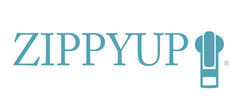Any bottle-feeding mum will know that it comes with a lot of questions in the early days. Essentially, feeding your baby can come with a lot of emotional baggage too. Perhaps you can’t breastfeed, and you’re worried about bottle feeding as a result, or you simply chose not to.
Whatever the reasons, just remember that feeding your baby is always a chance to bond, regardless of how you do it. Here, we delve into responsive bottle feeding to see how it can help you and your baby to thrive.
What is responsive bottle feeding?
Similar to responsive breastfeeding, responsive bottle feeding relies on the baby’s hunger cues. The key is to look for the early signs and to feed your baby responsively in line with those, rather than on a set schedule.
In the first few weeks, you might not see much of a pattern over 24 hours, but once you settle into the swing of things, your baby will likely want a bottle at regular times throughout the day and night.
Baby’s hunger cues include the following:
- Early – rooting or turning head, opening mouth.
- Mid-cues – hand to mouth and restlessness.
- Late cues – getting agitated, crying and turning red.
By getting to your baby as early in this process, you can keep your baby calm and happy.
Bottle-feeding tips
Unless there’s some reason that you need to bottle feed immediately, when you’ve delivered your baby, the midwife helps you get to grips with breastfeeding. They’ll show you how to hold your baby and encourage them to latch on.
If you decide to bottle feed somewhere down the line, be it in days, weeks or months, you will need to find out how to bottle feed. Looking out for hunger cues is a big part of it, but how do you hold your baby, or help them if problems arise?
The NHS have lots of information to get you started, including advice like:
- Holding your baby close in a semi-upright position. This is a little different to breastfeeding, where there are almost horizontal across your body.
- Sitting comfortably so you can stay in that position for as long as your baby needs without giving you backache!
- Brushing the teat of the bottle on the baby’s lips to encourage them to latch.
- Keeping the bottle horizontal.
- Winding your baby after each feed.
If your baby squirms and cries while bottle feeding, or dribbles milk, you may need to look at simple tweaks, like adjusting the flow of the teat. If you’re concerned that you need to take extra steps such as changing your formula, speak with your doctor or midwife to get some sound advice first.
Preparing bottles for night feeds
One of the challenges of bottle feeding is making bottles on the go or during the night. You shouldn’t use made-up formula after 2 hours. There are ways around this though. Here are some options to make this part of bottle feeding fuss-free:
- While you’re out, prepare a measured amount of formula into a dry, clean container, a flask of boiled water, and a sterilised bottle. Mix then needed!
- Put a made-up bottle in a cool bag with an ice pack and heat up within four hours.
- Invest in a Perfect Prep machine for quick, easy night and daytime feeds at home.


